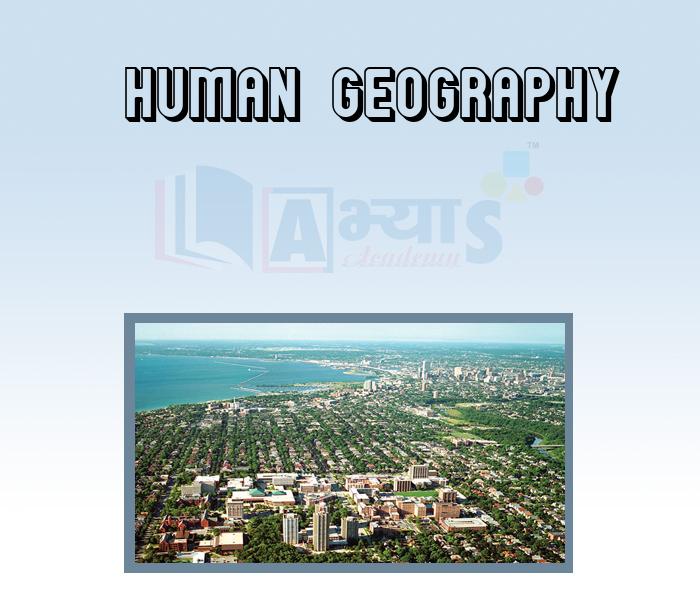Human Geography

Human Geography
Human Geography: Human geography is the study of human use and understanding of the world and the processes that have affected it. Human geography broadly differs from physical geography in that it has a greater focus on studying human activities and is more receptive to qualitative research methodologies. Broadly speaking human geography is a social science discipline, whilst physical geography is an earth science. Human geography studies the relationship and pattern of interactions between human beings and their physical environment.
Population, in the broadest terms, refers to the way people are spread over the surface of the.earth. It would interest the student that while most of the earth's surface in uninhabited, nearly nine-tenths of the world population lives in about one tenth of the earth's area. Nearly sixty percent of the earth's population is housed in just ten of the most populous countries of the world. Six of the most populous nations in the world are located in Asia.
Measures of Population Distribution and Concentration: Population concentration can be studied under the topics of population distribution and population density, While population distribution refers to the spatial location of the population, the population density refers to the number of people per unit of land.
Factors Affecting the Density of Population: Population density is the product of a number of socio-economic, physical and geographical factors, which are mentioned under:
Geographical Factors: Geographical factors like availability of land, the physiography of landscape, its climate, soils, etc. are the main factors in this category. Despite the cultural advancement of humans, these factors still determined the distribution and density of population largely. For example, the Indo-Genetic plains favour the Jocation of people in comparison to the mountains.Economic Factors: Economic factors like availability of minerals, opportunities of employment, presence of basic amenities etc. largely influence the distribution and density of population. For example, the Katanga Zambia (copper mines) in Africa attracts large population.
Population Growth: Population of the world is not static but changing constantly. This change in population between two points of time is known as growth of population. It is determined by three factors - birth rate, mortality rate, and migration. While the first two factors are natural, the last one is anthropogenie. Nror kvkan Population growth is expressed in terms of number or in percentage. It can be positive or negative. Economic development, social upliftment and other developments of any region can be easily identified by keeping a closer look on the population growth of that region.
Students / Parents Reviews [10]
It was a good experience with Abhyas Academy. I even faced problems in starting but slowly and steadily overcomed. Especially reasoning classes helped me a lot.

Cheshta
10thMy experience with Abhyas academy is very good. I did not think that my every subject coming here will be so strong. The main thing is that the online tests had made me learn here more things.

Hiya Gupta
8thMy experience with Abhyas is very good. I have learnt many things here like vedic maths and reasoning also. Teachers here first take our doubts and then there are assignments to verify our weak points.

Shivam Rana
7thMy experience was very good with Abhyas academy. I am studying here from 6th class and I am satisfied by its results in my life. I improved a lot here ahead of school syllabus.

Ayan Ghosh
8thBeing a parent, I saw my daughter improvement in her studies by seeing a good result in all day to day compititive exam TMO, NSO, IEO etc and as well as studies. I have got a fruitful result from my daughter.

Prisha Gupta
8thIt has a great methodology. Students here can get analysis to their test quickly.We can learn easily through PPTs and the testing methods are good. We know that where we have to practice

Barkha Arora
10thAbhyas is a complete education Institute. Here extreme care is taken by teacher with the help of regular exam. Extra classes also conducted by the institute, if the student is weak.

Om Umang
10thIt was good as the experience because as we had come here we had been improved in a such envirnment created here.Extra is taught which is beneficial for future.

Eshan Arora
8thAbout Abhyas metholodology the teachers are very nice and hardworking toward students.The Centre Head Mrs Anu Sethi is also a brilliant teacher.Abhyas has taught me how to overcome problems and has always taken my doubts and suppoeted me.

Shreya Shrivastava
8thI have spent a wonderful time in Abhyas academy. It has made my reasoning more apt, English more stronger and Maths an interesting subject for me. It has given me a habbit of self studying









